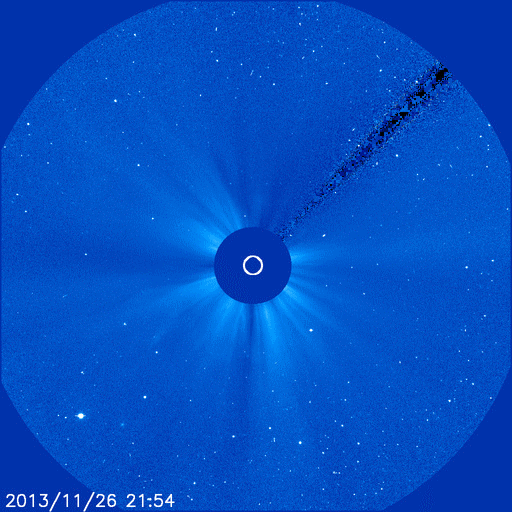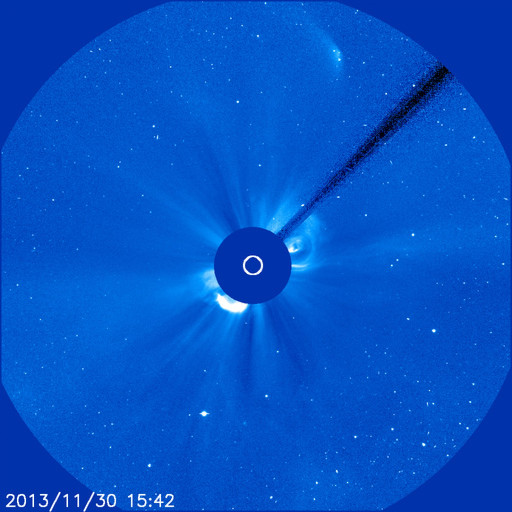Comet ISON Lives? 'Comet Of The Century' No More But Small Chance Nucleus Is Intact
On Friday, Comet ISON's destruction seemed all but certain. Using images collected by NASA's Solar Dynamics Observatory, astronomers could not find ISON on the other side of the sun, which led them to believe the comet disintegrated prior to perihelion, an orbit's closest point to the sun.

Comet ISON's orbit took the object a mere 730,000 miles from the surface of the sun. As astronomers tracked ISON from its discovery in 2012, many feared the comet would break up before it could dazzling Earth on its return. If the comet survived its trip around the sun it would have been visible with the naked eye during broad daylight, a stunning display that earned ISON the moniker of the "comet of the century."
Skywatchers around the world were able to watch Comet ISON's orbit around the sun via observations from NASA's SDO, and the European Space Agency and NASA's Solar & Heliospheric Observatory, SOHO, on Thanksgiving. While it seemed all but certain that ISON did not survive, new images are offering hope that the comet's nucleus is intact.
Images from SOHO on Friday indicate the possibility of ISON's survival as there appears to be an object with a tail, reports the Associated Press. Alan Fitzsimmons, an astronomer at Queens University in Belfast, Northern Ireland, told the AP, "It certainly appears as if there is an object there that is emitting material."
In a blog post, ESA offered some possibilities to explain why many, including itself, declared ISON dead. The agency said it was possible that there was not enough interaction between the comet and the sun's corona, making it invisible to extreme-ultraviolet telescopes, including ESA's Sun Watcher with Active Pixels and Image Processing, or SWAP. Another factor could have been ISON's composition as it may not have contained a lot of iron. ESA notes SWAP is tuned to observe light generated by the burning of iron and if ISON was more rock and ice than iron, it may not have burned enough material to be visible.

Images received later Thursday depicted what appeared to be a dust trail, but that trail, instead of dimming, grew brighter, reports AP. NASA believes there is a small nucleus that is intact. The most recent images from SOHO reveal a very faint ISON, but considering its history, the comet may have one more surprise left for observers. Even if ISON does not survive its trip around the sun, the comet will be a boon for research. The ancient comet gives researchers new insight on the early universe, the composition of a comet as well as comet interactions with the sun.
© Copyright IBTimes 2024. All rights reserved.






















